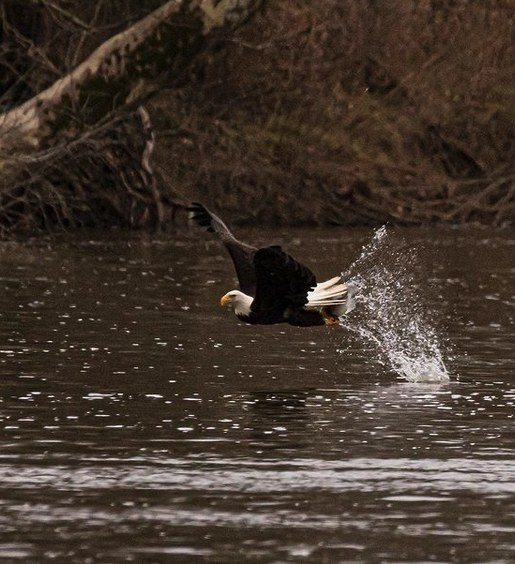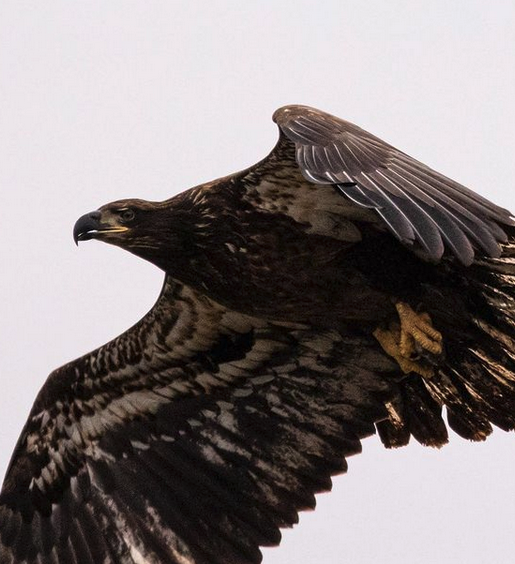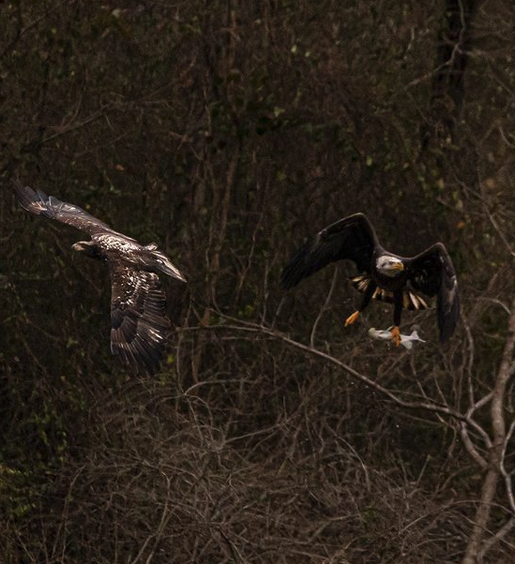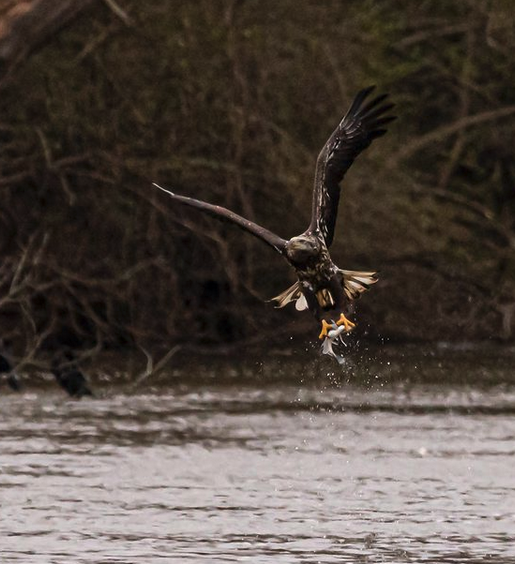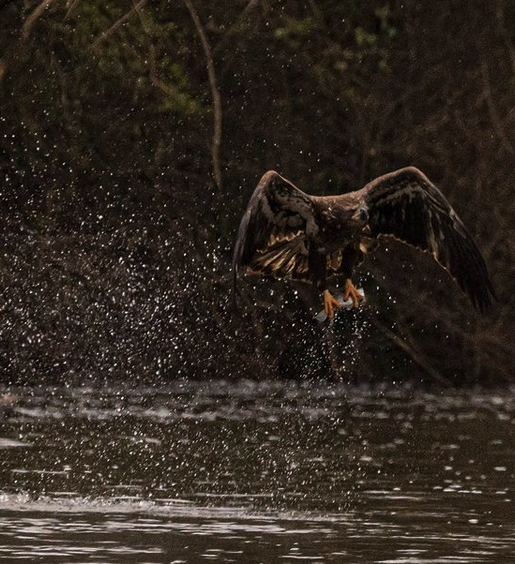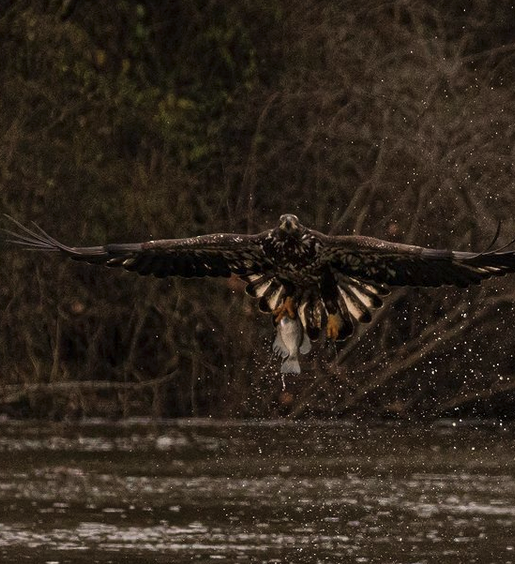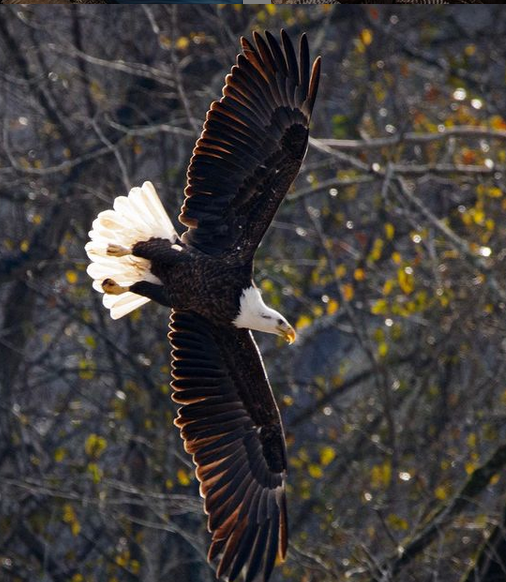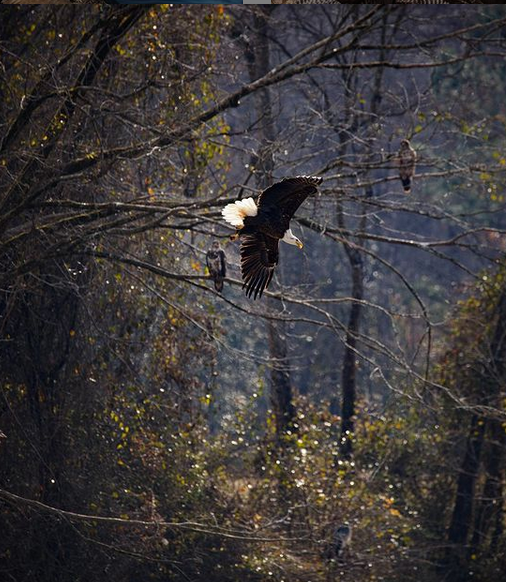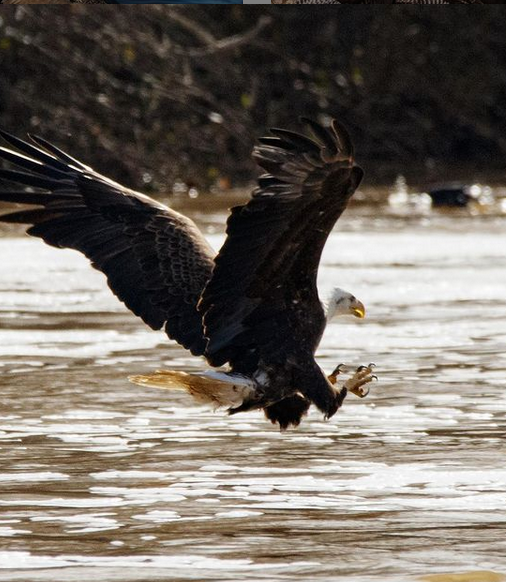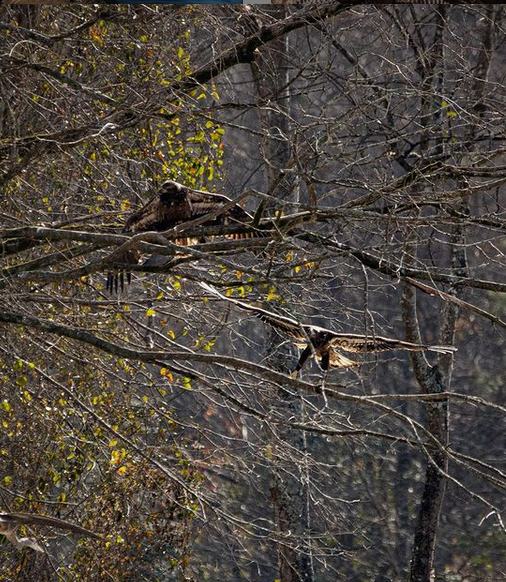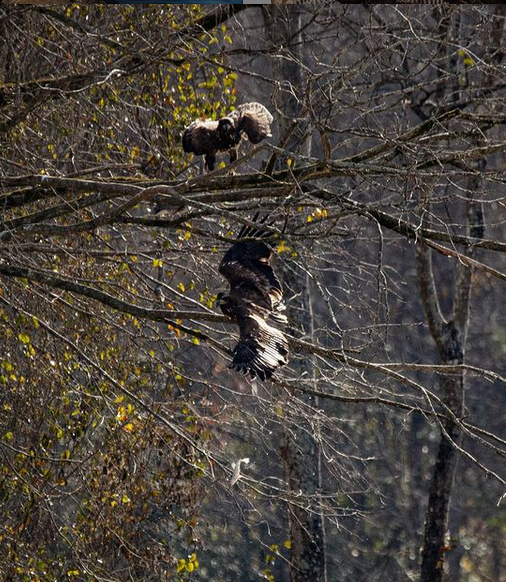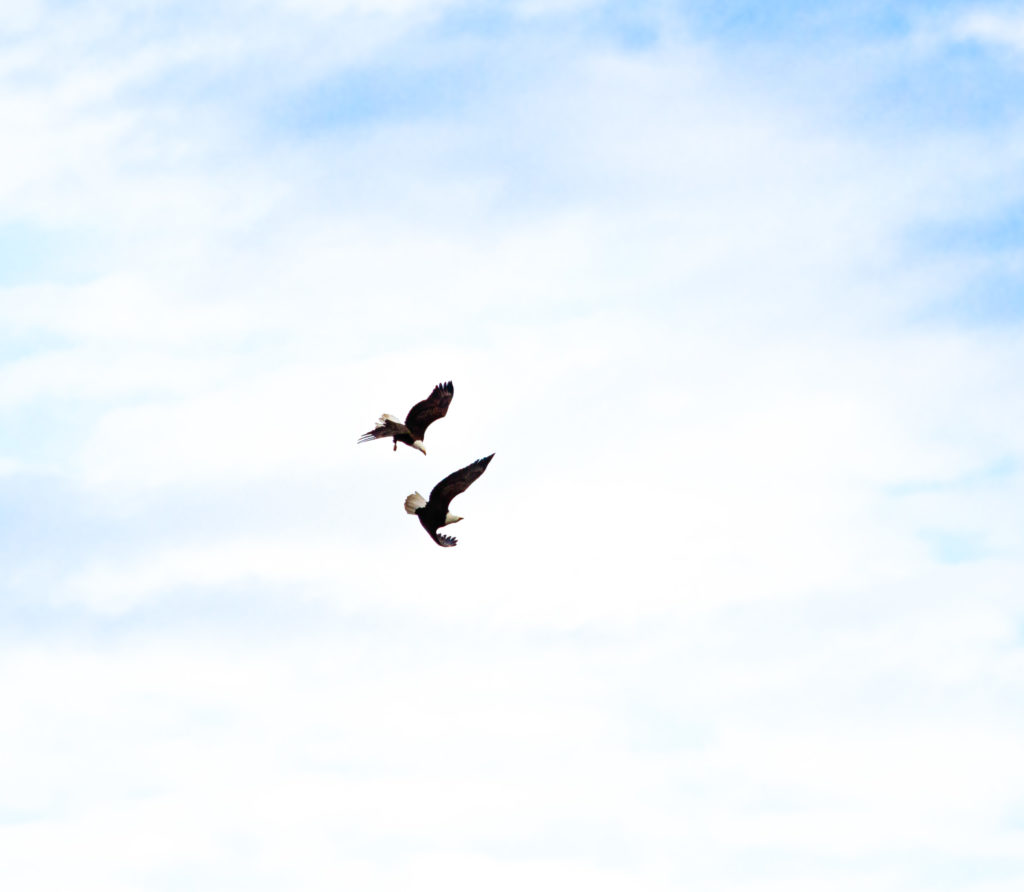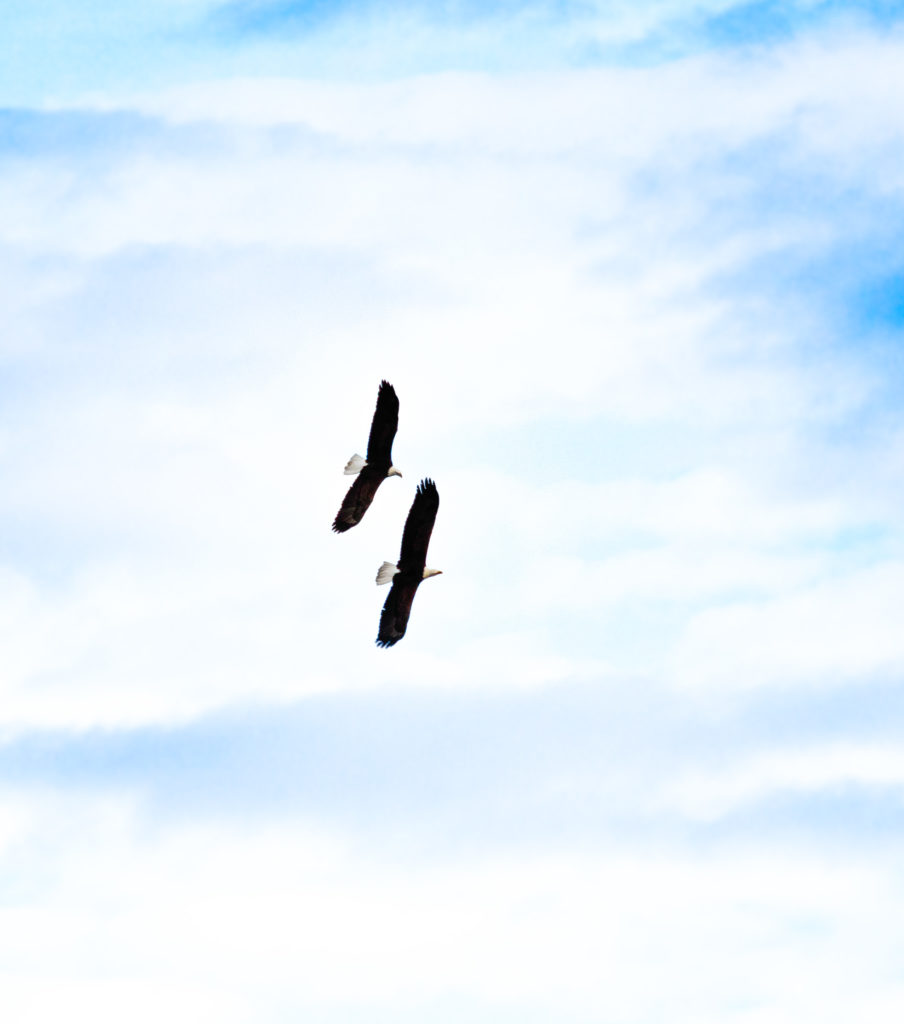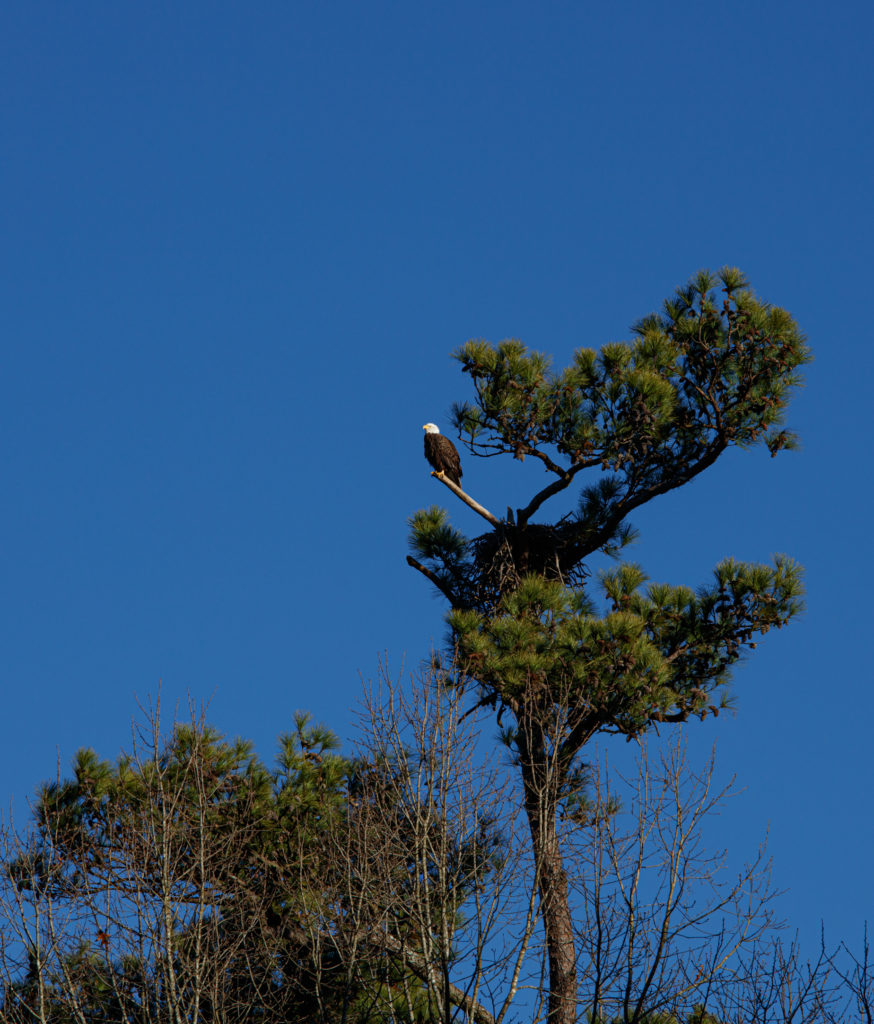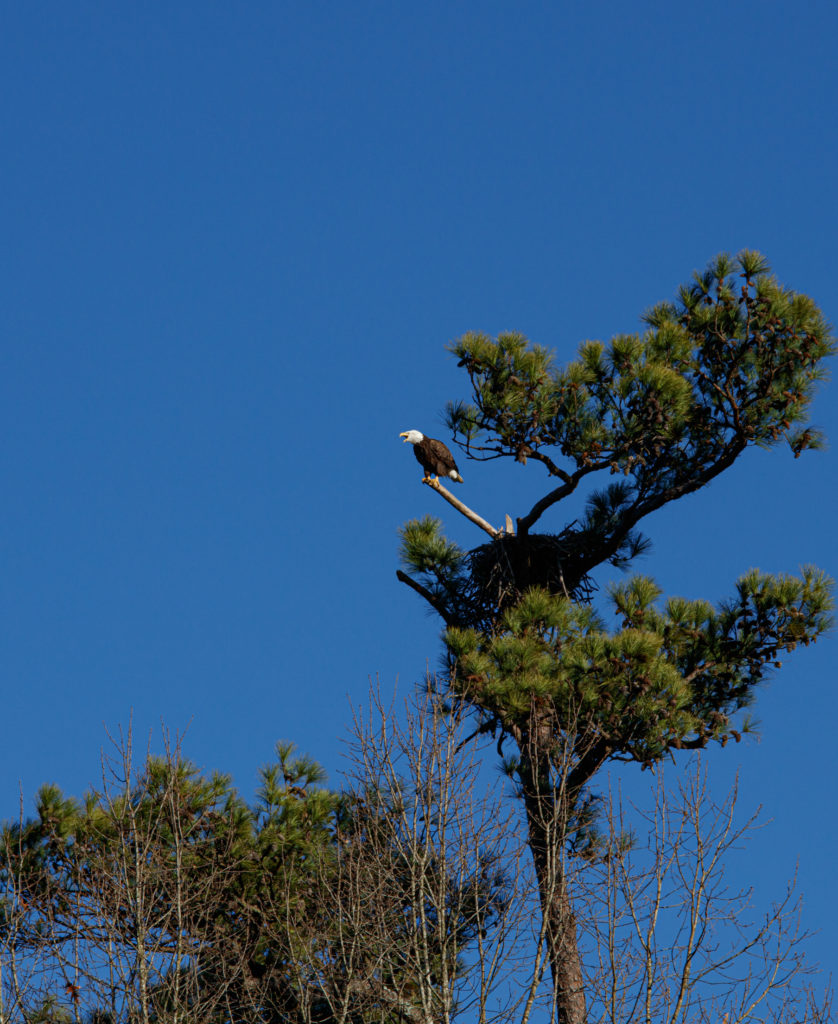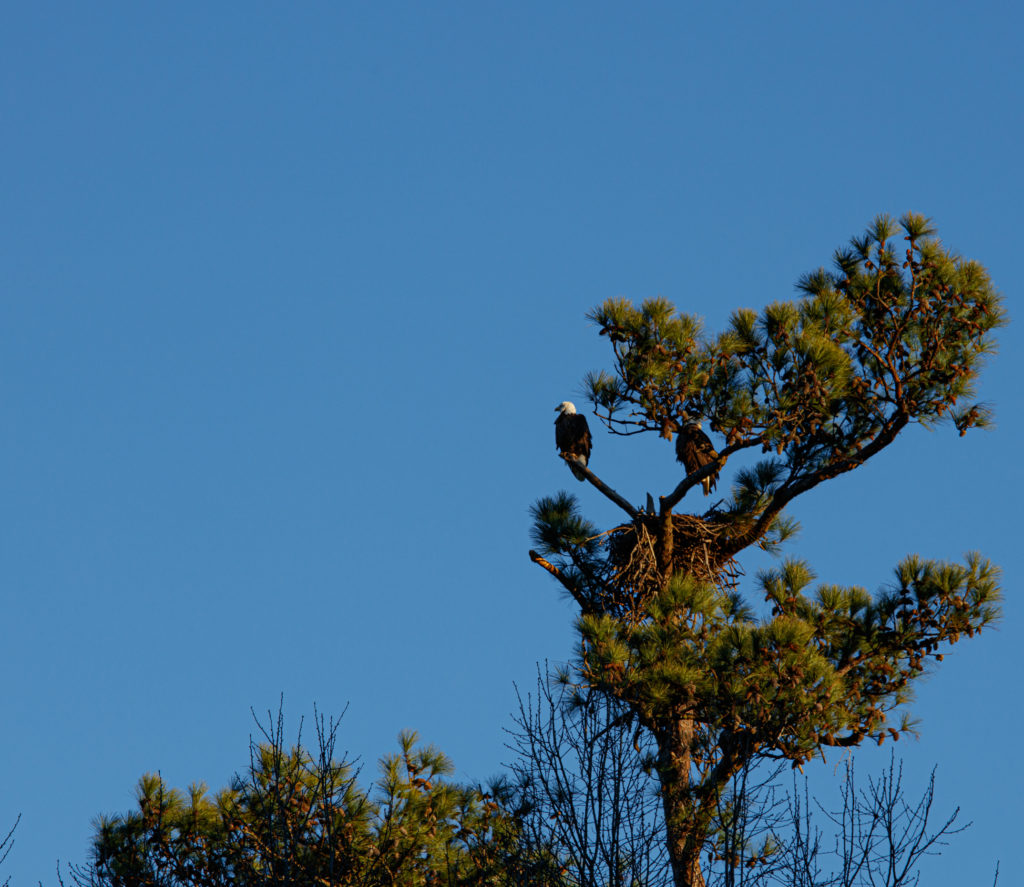Last week, I headed down to Jordan Lake in New Hill, NC to catch some Bald Eagle action. As usual, the birds did not disappoint!
Dropping out of the sky like darts, the Eagles put on an absolute clinic on how to catch the fish swimming in the icy river.
It was epic to watch them hit the water with a splash and come up with a wriggling fish. Their speed is breathtaking and for the older ones, their accuracy is astounding.

Bald Eagles use a couple of fishing techniques to fill their bellies during the winter.
Here on the Haw River, their favorite method is to perch in a tree and watch for a fish swimming in the water below, and then swoop down to capture it.
Just before they hit the water, the adult Eagles will pull their legs up into the classic C shape extending their talons in front of them to align their strike zone with the target fish below.
The immature birds are still learning this method so their legs tend to drag behind them resulting in missed strikes. With practice they’ll achieve the nearly 95% success rate that the adults enjoy.
After catching a fish the eagle will either fly back to a perching tree to eat it, or if the fish is small enough, swallow the meal whole while the bird is in flight. Occasionally, they’ll employ a second “fishing” technique by harassing one another in flight in order to get the successful hunter to lose his fish in midair.
Diving and nipping at at each other the aggressor will slam into the other bird in midair in an attempt snatch the fish from the other birds talons or in effort to get the other to drop the fish for easy pickings later.
It’s quite entertaining to watch and very interesting to note the difference between the hunting techniques of the experienced hunters vs. the newbies still learning the game.
Photos by @sally_siko of @birdwatching_nc on my mighty mirrorless monster, the @canonusa#R5

